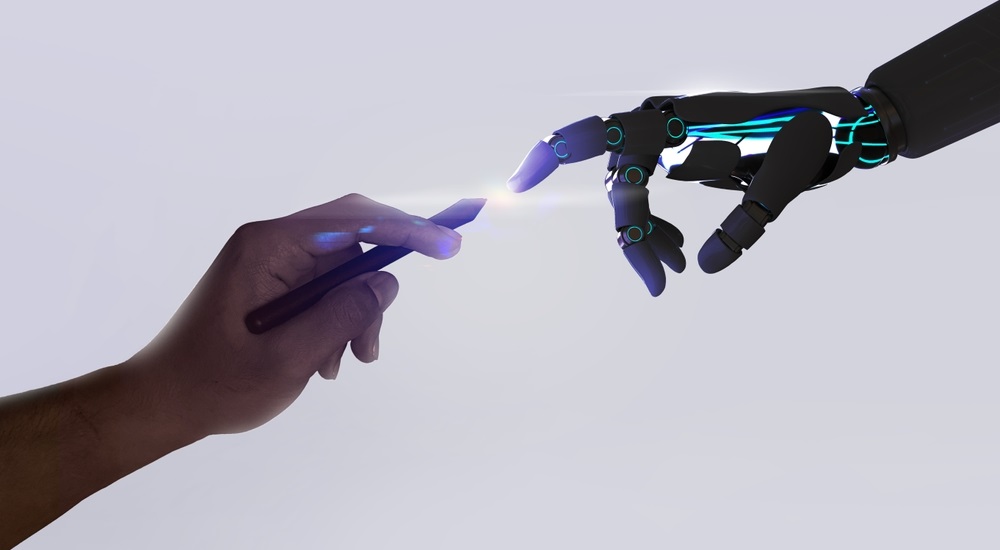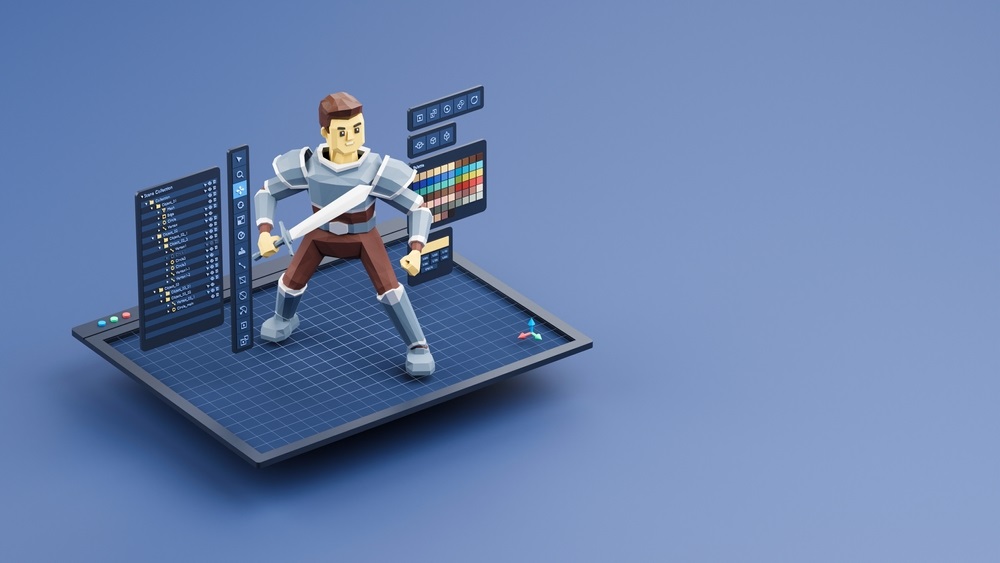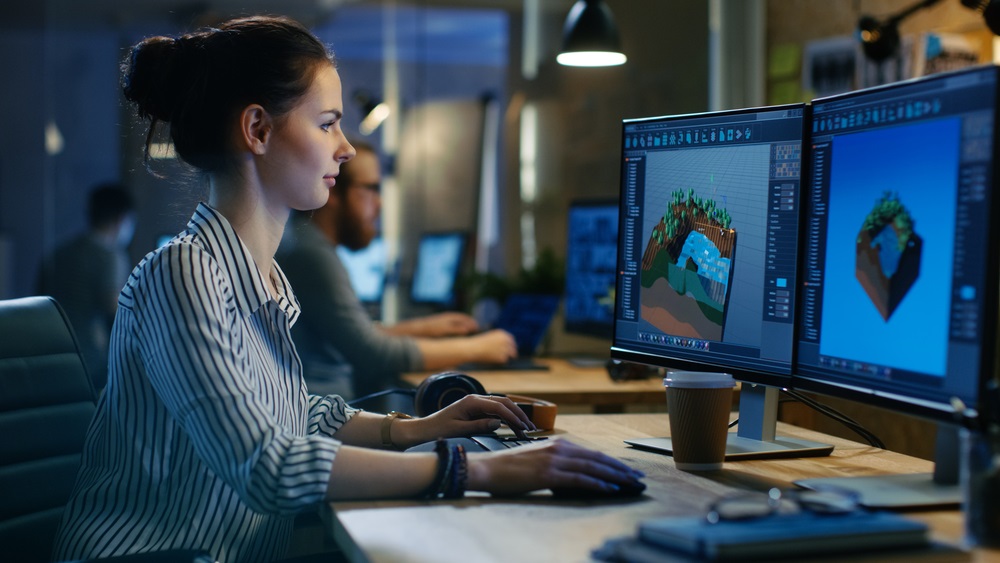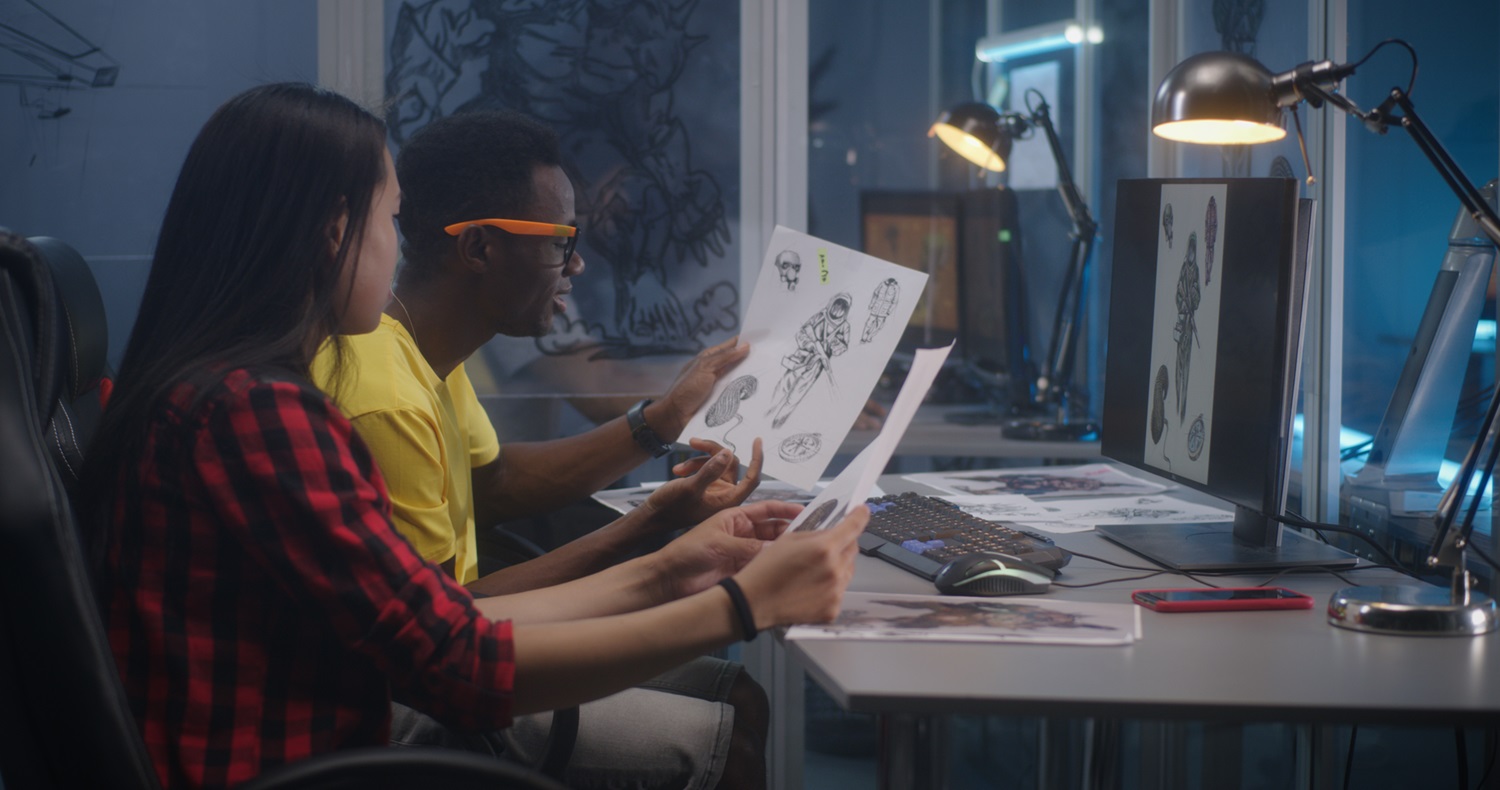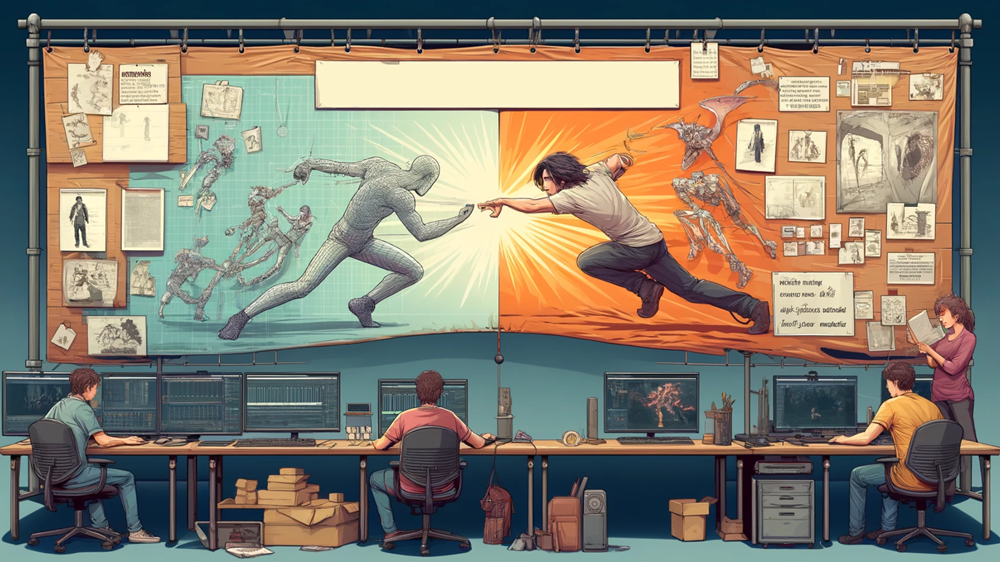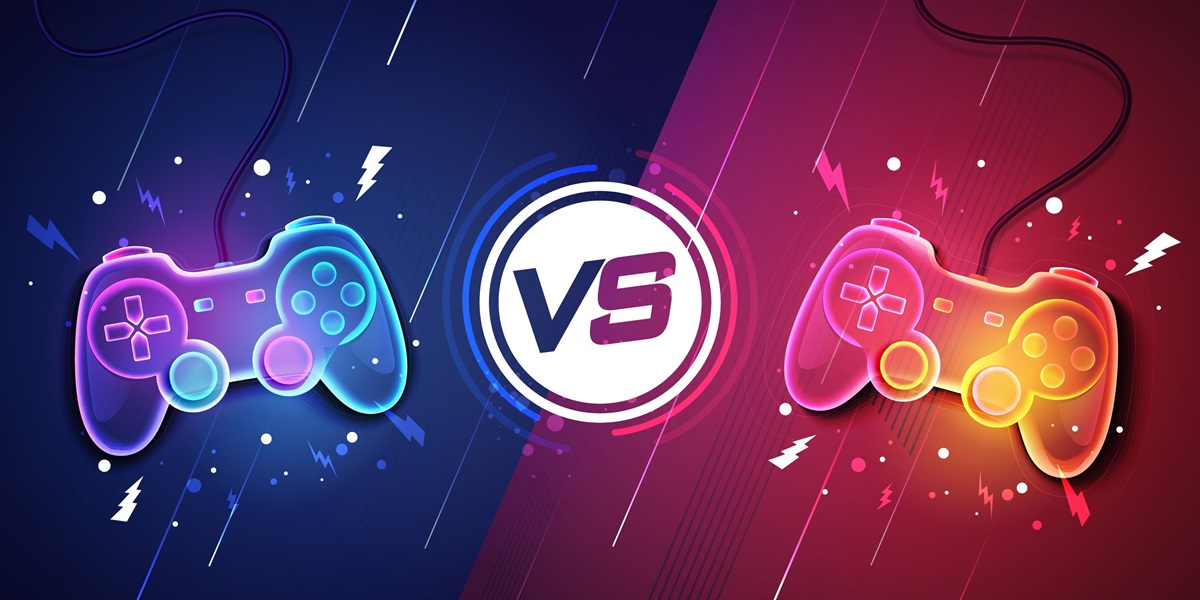Design AI: AI Tools for Graphic Design to Unleash Creativity
Artificial intelligence works based on the data that it learns and trains upon. From things that already exist in the broader landscape. And yet, today, it is able to create new pieces of content – words, colors, shapes, and designs in a range of new and innovative manners.
It has reached a point where though not able to mimic human ingenuity, it is certainly able to supplement and even assist people in creating new works of art.
Generative tools today see the use of AI for graphic design, creating images, portraits, visual content, and other forms of art. Where the computational powers of a smart model are able to dynamically bring pixels and intelligence together, onto a digital canvas.
How AI for Graphic Design Works
The use of AI for graphic design stands to amplify the usual productivity levels of graphic designers and digital artists. That’s because AI gives the process of creating artistry – an analytical edge.
It takes the best of data and prompts upon which it has trained upon, and equips artists with not just colors and brushes but also data-driven insights.
In this way, AI is painting the digital space with new illustration trends and enhancing the artistic skills of designers and skilled experts. Here’s how AI for graphic design typically works:
✔️Generates New Ideas
The writer’s block is sadly, not limited to just writers. It extends to creative artists too who get what’s known as an ‘Art’ block from time to time. Fortunately, AI for graphic design has been able to hash out the problems for artists, somewhat similar to conversational AI for writers – in that it helps artists to come up with new ideas to work on for graphic designs.
Aside from ideas and descriptions, AI for graphic design also comes up with what color palettes will suit the design work one’s working on. The typography pairings they should select or font style and whatnot. Plus, in case they want to think of new concepts for layouts or styles, that can also be arranged to by using AI-powered tools.
✔️Enhances Fidelity
Graphical fidelity refers to how faithful a digital rendering or representation of a drawing, image or design is to the artist’s original ideas and concept. It holds weight amongst various parameters of judging visual artwork and 3D simulations in the digital landscape.
And it’s also what makes it important that the quality of the design or art is perfect or as close to perfect as it can be.
AI for graphic design works by enhancing the graphical quality that can be achieved by designers while working on any piece of theirs. It can use various AI algorithms so that final output quality has less of noise and any parts where the colors get muted or degrade.
Moreover, it can artificially remove and correct any imperfections once found – making it easier for designers to work with images of varying resolutions and delivering high-fidelity designs. While using any 3D modeling software of their choice.
✔️Automates Tasks
During the course of their work, artists and designers have to often complete a lot of small tasks and bits of work here and there that contributes to shaping their final piece.
Consider them as minor adjustments or edits that need to made from time to time. Often these things can add up and become a detriment to the designer’s schedule and ability to manage their time and efforts.
Because of how AI can streamline work in many other aspects, using AI for graphic design also allows for automating these repetitive or smaller but useful tasks. These tasks can range from something as simple to applying filters and different color choices – to creating color gradients and cropping/resizing images to be used in designs.
This not only ensures that these small tasks are completed automatically in the correct manner, but also saves a lot of time for the designers who can then redirect their time and efforts to other parts of the design.
These are some of the ways in which AI for graphic design has changed the landscape for artists and designers in their line of work. As AI evolves and more of generative AI use cases emerge, these tools can also allow designers to make various visual components from scratch as ‘digital assets.’
And it offers a host of advantages to graphic designers for businesses and companies looking for the best in quality and creative works.
Benefits of Using AI Tool for Graphic Design
Graphic design is the bread and butter for many industries and their marketing or visual communications. It empowers companies with the right kind of branding, lets them design new marketing campaigns and even helps with the designing and packaging of products for the market.
Apart from that, it has been a staple for mediums that pushes communication. And even for platforms involved in educational practices and making game design document. AI for graphic design is a major driving force for change and modernization of the design process. Here are some important benefits of using AI tools for graphic design:
✔️Increases Design Efficiency
AI-powered solutions simplify time-consuming and repetitive processes including picture editing, layout creation, and file organizing. This allows AI for graphic design tools to speed up the design process and allows designers to concentrate on additional imaginative and tactical areas.
✔️Enhances Artist’s Creativity
Color palettes, typeface pairings, and layout suggestions for graphic designs may all be generated using AI techniques. This can assist designers in developing fresh and unique concepts.
✔️Allows for Personalized Content
AI for graphic design and such technologies may be used to customize graphic designs for various audiences. For instance, an AI tool may be used to create web-based visuals that have been personalized according to the preferences of every user.
✔️Reduces Production Costs
In graphic design, artificial intelligence minimizes the need for considerable human work, resulting in cost reductions for design projects. It reduces operating costs by streamlining processes, optimizing the allocation of resources, and streamlining workflows.
✔️Consistency in Design and Branding
Using AI techniques for graphic design purposes guarantee that branding aspects are consistent across several sources. They may keep colors, typefaces, logos, and aesthetics of designs consistent, enhancing company identification and professionalism.✔️Adapting and Learning
AI for graphic design and its algorithms are learning and adjusting to emerging developments in design, technology, and user behaviors on a constant basis. Quite similar to models based on leveraging spatial intelligence.This allows designers to remain up to date on industry advancements and incorporate cutting-edge design techniques into their work.
These are some of the essential benefits enabled by utilizing AI for graphic design. It helps designers become efficient, creative and better at what they do – all the while helping brands and businesses to stay in tune with the latest trends and styles.
Best AI for Graphic Design Tools and Why They’re Unique
Graphic design is a multi-faceted job and there are various ways in which artists can become better at it. Various ways in which businesses can adopt new standards for design and reach their goals and interests.
And one of the significant ways of doing that, is using the latest tech or tools in this regard. Especially if its something for the crypto world such as NFT design and development.
Now that we’ve learnt about how AI for graphic design works, and some of its major benefits for, let’s take a look at some popular AI for graphic design tools. And also learn what makes them unique:
✔️Adobe Sensei
Developed by the company behind the popular design software ‘Photoshop,’ yes the Adobe Inc., Adobe Sensei is a popular software that doubles up as a box of AI tools. It extends these AI tools to various applications that are included in its ‘Creative Cloud’ – such as Photoshop, InDesign and Illustrator.
Generally, as an AI for graphic design tool, Adobe Sensei completes a variety of tasks leveraging AI, like selecting objects, editing images and generating content.
What makes it unique is that Adobe Sensei actually learns from how the user interacts with the software over time. It learns from the user’s preferences and is thus able to deliver a personalized experience even for graphic designers or companies that use Adobe Sensei.
So like, in case you like to use a particular effect more than others, the program’s AI element will recognize when you would want to use it and suggest it the next time to you.
✔️Uizard
As an AI-powered tool, Uizard is another perfect example of using AI for graphic design. Based in Denmark, this program works in letting people make mock designs for their websites, applications and all other types of products.
It off of basic text prompts and descriptions, with an added benefit of providing insights and ideas on making it better if required.
What makes this tool unique is that for beginners or the average layman, Uizard is one of the easiest AI for graphic design apps. People with little to no previous idea of graphic design can also use it.
And for their advantage, they can also access Uizard’s library of templates which the user can opt for and start on a new project with a sort of a head start.
✔️Khroma
Colors play an important part of any graphic design project and Khroma is the tool for designers and companies seeking to get it just right from that aspect.
On its own, Khroma uses AI for graphic design by picking colors for various types of designs and projects. It’s used by designers to create color palettes based on the mood or tone of their work, the theme they are going for or based on a company’s identity and brand.
What’s unique about Khroma is that the tool has a neat feature that allows users to sample and choose from color palettes they find in real-world settings such as from art, images or videos.
Furthermore, it also allows designers in making customized color gradients that are all very useful for reducing their workload.
And there you have it. These are some of the best AI for graphic design tools that one can use in today’s landscape. And also, on what makes them unique or pop from amongst various other tools in the digital landscape.
As we conclude, we can see how these tools and uses of AI for graphic design are pushing creative uses of digital technology for artists and designers.
Based on what we’ve seen, it can help companies in realizing their project, their brand’s design, and various other marketing or campaign-related works smartly and efficiently.
If you want to begin your brand or organization’s design journey with the strength of AI, then we invite you to reach out to our team. At EDIIIE, we have been at the forefront of this digital wave and are well-experienced in using AI capabilities for designing purposes.
Call us for a quick consultation and let’s start bringing the vision for your brand’s success to the main stage.
